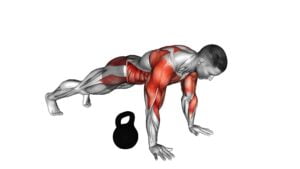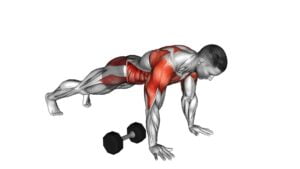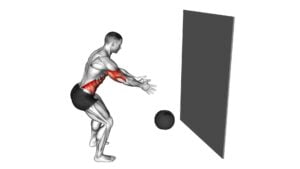Kettlebell Lunge Pass Through – Video Exercise Guide & Tips

Are you looking to level up your workout routine? Check out this video exercise guide and tips for the kettlebell lunge pass through.
Watch This Exercise Video
In just a few minutes, you'll learn the proper form and technique, as well as modifications for all fitness levels.
Avoid common mistakes and get expert advice on incorporating this exercise into your routine.
Get ready to challenge yourself and see results with the kettlebell lunge pass through.
Let's get started!
Key Takeaways
- Targets multiple muscle groups including glutes, quads, and hamstrings
- Increases strength and stability
- Offers variations to target different muscle groups
- Enhances overall stability and coordination
Benefits of the Kettlebell Lunge Pass Through
Discover the numerous benefits you can experience from incorporating the Kettlebell Lunge Pass Through into your fitness routine.
Lunges are a popular exercise that target multiple muscle groups, including the glutes, quads, and hamstrings. Adding a kettlebell to the mix takes the benefits to a whole new level.
One of the main benefits of the Kettlebell Lunge Pass Through is increased strength and stability. By holding a kettlebell in front of your chest and performing lunges, you're challenging your core muscles to maintain balance and control. This not only helps you build a stronger core but also enhances your overall stability and coordination.
Another benefit of this exercise is improved lower body strength. Lunges are known for their ability to target the muscles in your legs, and the Kettlebell Lunge Pass Through is no exception. By adding the weight of the kettlebell, you're increasing the resistance and making the exercise more challenging. This leads to greater muscle activation and ultimately, increased strength in your glutes, quads, and hamstrings.
In addition to these benefits, the Kettlebell Lunge Pass Through also offers variations that allow you to target different muscle groups. For example, by performing a reverse lunge instead of a forward lunge, you can shift the focus onto your hamstrings and glutes. Similarly, performing a side lunge can target your inner and outer thighs. Incorporating these variations into your routine can help you develop a well-rounded lower body workout.
To sum it up, the Kettlebell Lunge Pass Through offers a range of benefits, including increased strength, improved stability, and the ability to target different muscle groups. So why not give it a try and experience the benefits for yourself?
Equipment and Set-Up for the Exercise
To properly perform the kettlebell lunge pass through exercise, you'll need a kettlebell of appropriate weight and a clear space to move in.
Make sure the kettlebell is within easy reach and that you have enough room to perform the lunge movement without any obstacles.
Setting up the exercise correctly is crucial to ensure safety and maximize the effectiveness of the workout.
Required Equipment for Exercise
What equipment do you need and how should you set it up for the Kettlebell Lunge Pass Through exercise? Here's what you'll need and how to get ready for this exercise:
- Kettlebell: Choose a kettlebell that's appropriate for your fitness level. Start with a lighter weight and gradually increase as you get stronger.
- Open space: Make sure you have enough room to perform lunges without any obstructions.
- Exercise mat: Place a mat on the floor to provide cushioning and stability.
- Optional: If you have wrist pain or discomfort, you can use wrist wraps for added support.
To set up for the Kettlebell Lunge Pass Through exercise, follow these steps:
- Stand with your feet hip-width apart, holding the kettlebell by the handle with both hands.
- Step forward with one foot and lower your body into a lunge position.
- Pass the kettlebell under your front leg and transfer it to the opposite hand.
- Push off with your front foot and return to the starting position.
- Repeat the exercise on the other side.
Proper Set-Up Technique
To properly set up for the Kettlebell Lunge Pass Through exercise, you'll need the following equipment and a clear space to perform the lunges without any obstructions.
First, you'll need a kettlebell of an appropriate weight for your fitness level. It's essential to choose a kettlebell that you can comfortably hold with one hand while performing the exercise.
Additionally, make sure you have enough space to perform lunges without any objects or obstacles in your way.
When setting up for the Kettlebell Lunge Pass Through, proper foot placement and hip alignment are crucial. Start by standing with your feet hip-width apart and your toes pointing forward.
As you step forward into a lunge, ensure that your front knee is directly above your ankle and your back knee is hovering just above the floor. Keep your hips square and facing forward throughout the exercise to maintain proper alignment and maximize the effectiveness of the movement.
Proper Form and Technique for the Kettlebell Lunge Pass Through
When performing the kettlebell lunge pass through, it's important to maintain proper form and technique by engaging your core and using a subordinating conjunction. This exercise requires coordination and stability to execute correctly.
Here are some tips to help you maintain proper form and technique during the kettlebell lunge pass through:
- Engage your core: Keep your abdomen tight throughout the movement to stabilize your body and protect your back.
- Maintain an upright posture: Keep your chest lifted and shoulders back to ensure proper alignment and prevent straining your lower back.
- Step forward with control: Take a controlled step forward into the lunge position, making sure your front knee stays aligned with your ankle.
- Pass the kettlebell underneath: As you lunge forward, pass the kettlebell underneath your front leg, switching hands as it passes through.
- Keep your gaze forward: Maintain a forward gaze to help with balance and stability during the exercise.
- Control your movements: Slowly return to the starting position, focusing on using your leg muscles to push yourself back up.
Modifications and Progressions for All Fitness Levels
To modify and progress the kettlebell lunge pass through exercise for all fitness levels, incorporate variations that challenge different muscle groups and increase difficulty.
For beginners or those with limited mobility, a modification can be to perform the exercise without the kettlebell. Instead, hold onto a stable surface, like a chair or wall, for balance while performing the lunges. This modification helps to build strength and stability before adding the kettlebell.
To progress the exercise and increase difficulty, you can incorporate a heavier kettlebell or increase the number of repetitions. Another progression is to perform the lunge pass through exercise on an unstable surface, such as a balance board or BOSU ball. This forces your muscles to work harder to maintain stability and balance.
If you're looking for more of a challenge, you can also try performing the exercise with a kettlebell in each hand. This adds extra resistance and requires more coordination and control. Additionally, you can try performing the lunge pass through exercise at a slower pace, focusing on the eccentric (lowering) phase of the movement to engage your muscles even more.
Remember to always listen to your body and progress at your own pace. It's important to choose modifications and progressions that are suitable for your current fitness level and abilities.
Common Mistakes to Avoid While Performing the Exercise
To perform the kettlebell lunge pass through exercise correctly, make sure to maintain proper form throughout the movement.
Avoid excessive knee bending, as this can put unnecessary strain on the joints.
Additionally, focus on maintaining balance and stability by engaging your core and keeping your chest lifted.
Proper Form for Lunge
To ensure proper form for the lunge and avoid common mistakes, you should focus on maintaining a stable core and keeping your front knee in line with your ankle. Here are some tips to help you perform the lunge correctly:
- Engage your core muscles throughout the movement to maintain stability.
- Keep your chest lifted and your shoulders relaxed to prevent rounding of the upper back.
- Step forward with one foot and lower your body by bending both knees until your front thigh is parallel to the ground.
- Make sure your front knee stays directly over your ankle to avoid excessive stress on the joint.
- Push through your front heel to return to the starting position, keeping your weight evenly distributed between both feet.
By following these guidelines, you can maximize the benefits of the lunge variations and avoid unnecessary strain on your joints.
Now, let's discuss how to avoid excessive knee bending in the next section.
Avoiding Excessive Knee Bending
To avoid excessive knee bending while performing the kettlebell lunge pass through exercise, focus on maintaining proper form and engaging your core muscles. This will help you prevent knee injuries and improve your overall lower body strength.
When performing the exercise, make sure to keep your front knee directly above your ankle and avoid letting it extend past your toes. This will help distribute the weight evenly and reduce the strain on your knees.
Additionally, keep your back straight and your chest lifted, as this will help you engage your core and stabilize your body throughout the movement.
Maintaining Balance and Stability
To maintain balance and stability during the kettlebell lunge pass through exercise, focus on keeping your weight evenly distributed between your front and back leg. This will help prevent any wobbling or leaning that could throw off your balance.
Here are some common mistakes to avoid in order to improve your stability:
- Avoid shifting your weight too far forward onto your front leg, as this can cause you to lose balance.
- Similarly, avoid leaning too far back onto your back leg, as this can also disrupt your stability.
- Keep your core engaged and your torso upright throughout the exercise to maintain a stable center of gravity.
Tips for Incorporating the Kettlebell Lunge Pass Through Into Your Workout Routine
Incorporate the Kettlebell Lunge Pass Through into your workout routine for increased strength and stability. This exercise is a great way to incorporate kettlebell exercises and reap the benefits of lunges.
To begin, grab a kettlebell with both hands and hold it at chest level. Stand with your feet shoulder-width apart, ensuring that your core is engaged and your back is straight.
Take a step forward with your right foot, lowering your body into a lunge position. As you lunge, pass the kettlebell under your right leg and transfer it to your left hand. Push off your right foot and return to the starting position.
Repeat the movement on the opposite side, passing the kettlebell under your left leg and transferring it to your right hand. Continue alternating sides for the desired number of repetitions.
Remember to maintain a controlled and stable movement throughout the exercise. By incorporating the Kettlebell Lunge Pass Through into your workout routine, you'll enhance your strength, stability, and overall fitness level.
Frequently Asked Questions
How Many Sets and Reps Should I Do for the Kettlebell Lunge Pass Through?
For the kettlebell lunge pass through, it's important to determine the appropriate number of sets and reps for your fitness level and goals. Start with 2-3 sets of 8-12 reps per leg, focusing on proper form and control.
As you progress, you can increase the intensity by adding more weight or increasing the number of sets and reps. Remember, there are variations of the kettlebell lunge pass through that you can incorporate into your routine to keep it challenging and effective.
Can I Use a Dumbbell Instead of a Kettlebell for This Exercise?
Yes, you can use a dumbbell instead of a kettlebell for the lunge pass through exercise.
However, it's important to note that using a kettlebell has certain benefits.
Kettlebells provide a more challenging workout due to their off-centered weight distribution, which engages more muscles and improves core stability.
Additionally, the handle of a kettlebell allows for a more comfortable grip during the exercise.
Nevertheless, dumbbells can still be a suitable substitute if you don't have access to a kettlebell.
Should I Keep My Back Straight or Slightly Arched During the Exercise?
When performing the Kettlebell Lunge Pass Through exercise, it's important to maintain proper back position. You should aim to keep your back straight or slightly arched throughout the movement. This will help engage your core and protect your spine.
However, if you're a beginner or have any back issues, you can modify the exercise by using lighter weight or starting with bodyweight lunges. Always listen to your body and make adjustments as needed.
Is the Kettlebell Lunge Pass Through Suitable for Beginners?
The kettlebell lunge pass through can be suitable for beginners with proper modifications. Start with a lighter kettlebell and focus on mastering the technique. To make it easier, you can shorten the range of motion or use bodyweight instead.
Avoid common mistakes like rounding your back or letting your knee collapse inward. Keep your core engaged and maintain good posture throughout.
Practice regularly and gradually increase the difficulty as you progress.
Can I Perform the Exercise on a Mat or Do I Need a Specific Type of Flooring?
You can perform the Kettlebell Lunge Pass Through exercise on a mat or any suitable flooring.
The exercise doesn't require a specific type of flooring, as long as it provides a stable surface.
Using a mat can offer additional cushioning and grip, making it more comfortable to perform the exercise.
However, it's important to ensure that the mat isn't too slippery or unstable, as this can increase the risk of injury.
Conclusion
The kettlebell lunge pass through is a highly beneficial exercise that targets multiple muscle groups and improves overall strength and stability. By using proper form and technique, you can maximize the effectiveness of this exercise and avoid common mistakes.
Whether you're a beginner or advanced fitness enthusiast, there are modifications and progressions available to suit your fitness level. Incorporating the kettlebell lunge pass through into your workout routine can bring variety and challenge to your training regimen.

Author
Years ago, the spark of my life’s passion ignited in my mind the moment I stepped into the local gym for the first time. The inaugural bead of perspiration, the initial endeavor, the very first surge of endorphins, and a sense of pride that washed over me post-workout marked the beginning of my deep-seated interest in strength sports, fitness, and sports nutrition. This very curiosity blossomed rapidly into a profound fascination, propelling me to earn a Master’s degree in Physical Education from the Academy of Physical Education in Krakow, followed by a Sports Manager diploma from the Jagiellonian University. My journey of growth led me to gain more specialized qualifications, such as being a certified personal trainer with a focus on sports dietetics, a lifeguard, and an instructor for wellness and corrective gymnastics. Theoretical knowledge paired seamlessly with practical experience, reinforcing my belief that the transformation of individuals under my guidance was also a reflection of my personal growth. This belief holds true even today. Each day, I strive to push the boundaries and explore new realms. These realms gently elevate me to greater heights. The unique combination of passion for my field and the continuous quest for growth fuels my drive to break new ground.







